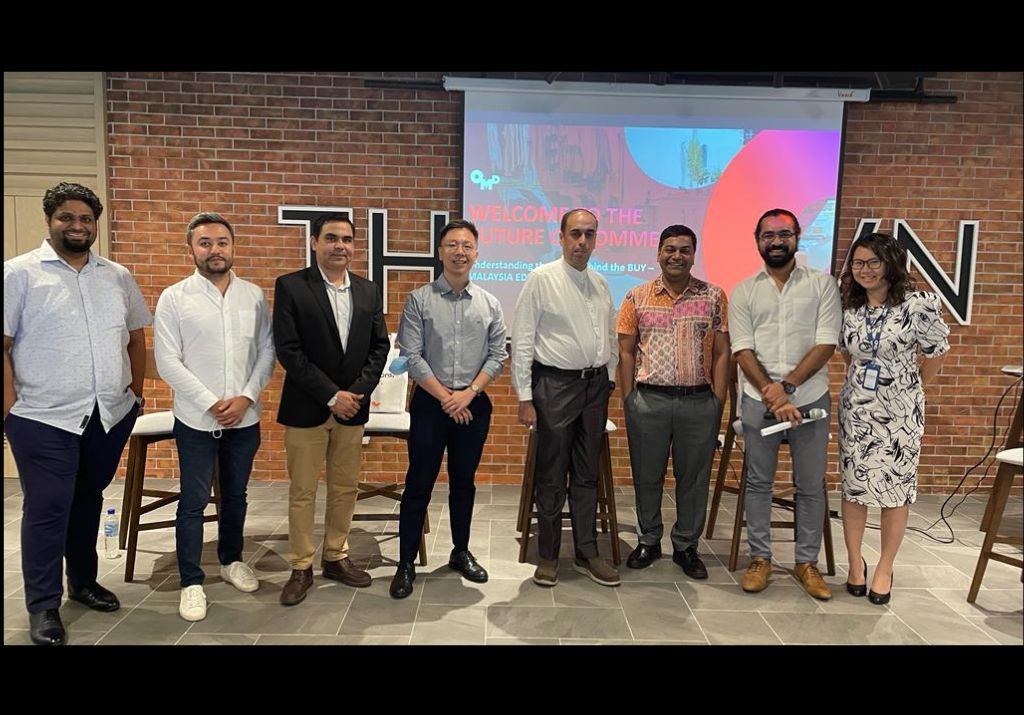OMD Malaysia has launched the ‘Future of Commerce – The Why behind the Buy’; to enhance our understanding of how consumers’ shopping habits changed over the last year.
The market-focused quantitative research investigates consumers’ perceptions, attitudes, and behaviours on future-facing technologies and the future of the next-generation retail experiences.
Retail choices are shaped by the forces of innovation, balanced with deep-seated habits and practices by both the shopper and the store.
This typically manifests in long-term structural shifts; through the 20th century, a change from small local stores to large hypermarkets or malls, and over the past 25 years, through the rise of e-commerce. Lockdowns and movement controls broke daily routines and deeply ingrained habits.
As we witness the changing shopping behaviours caused by the pandemic, we need to understand why behaviours have changed to understand what will happen next.
The Future of Commerce research seeks to quantify the different drivers of retail choices to define how retail brands should behave to understand the ‘why behind the buy’ and derive a competitive advantage.
Retail has always been a combination of experience, value and convenience – the pandemic has accelerated these drivers of choice, albeit forcibly and universally.
Mayank Bhatnagar, Managing Director of OMD Malaysia, shared, “In this post-pandemic era, value, convenience, and immediacy have become key drivers for hyper-connected consumers who are looking to rediscover the retail experience. Brands must move away from addressing retail marketing purely from a channel lens and focus on consumers’ nuanced expectations and their experiences. The Wow Right Now strategies aim to help brands embrace the conversion opportunities and stay ahead of the game.”
Attracting the future consumer through Wow Right Now means brands and retailers need to meet expectations across three distinct shopper mindsets:
- The need for rich interactive experiences on and offline
- Orchestrating value, price and purpose with messaging in the right place at the right time
- Delivering seamless ease through technology, channel integration and service delivery
This quantitative market-focused research surveyed 700 Malaysian respondents to explore how they feel about shopping today.
Through the Wow Right Now consumer lens, the study examines their attitudes to technology enhancing the shopping experience, their relationships with city-centres, and their expectations from brands across convenience, service, price and choice architecture. The research examines implications for several behavioural changes as we navigate the post-pandemic commerce landscape.
Eileen Ooi, CEO of Omnicom Media Group, Malaysia, commented, “While we know that the pandemic has changed consumers’ deeply-ingrained habits, it is easy to oversimplify numbers. With the ‘Future of Commerce, we understand that their new shopping behaviours, attitudes, perceptions, and expectations will help us elevate consumers’ retail experience. OMD Malaysia aims to arm our clients with the knowledge to thrive in this post-pandemic retail era.”
Wow – Rich interactive experiences on and offline
Malaysian consumers have clear expectations on how the wow factor is about blending experiential opportunities in-store and online. According to the research, 32% want a joint experience between online and in-store experiences, 30% want to click and collect/delivery options in-store and 23% want technology to make their visit more interactive.
With e-commerce’s exponential adoption during the pandemic, Malaysians have become accustomed to online shopping.
Consumers’ post-pandemic shopping preferences reflect new behaviours, especially in Malaysia. 33% of shoppers have stated that their shopping preferences will be made up of a mix of online and in-store.
Key Wow Implications:
- Unlock the potential of shopping as a lifestyle experience – brands can consider an ecosystem of partners to engage, reward and incentivise shopping with socialising.
- Enable buy-online pick-up in-store facilities – this will continue as the most preferred route of shopping moving forward.
- Map out need states in-store and apply online tactics – elements the online shopper has become used can be replicated in-store
- Provide a total sensorial experience in-store and focus on elements where physical location offers messaging that converts shoppers into buyers
Right – Orchestrating value, price and purpose messaging in the right place at the right time
32% of Malaysian shoppers (29% APAC) are buying more online, 39% (28% APAC) will continue to look for cheaper options, and 35% (26% APAC) will rely more on promotions and discounts.
With more people shopping online during the pandemic (39% of Malaysians), it has significantly contributed to Malaysia’s online shopping growth of 45% – one of the most significant growth rates in APAC.
The pandemic has created a new shopping behaviour in consumers, with 37% of Malaysians who adopted online shopping will continue to rely on e-commerce marketplaces.
Such new behaviour also reflects consumers’ needs states through their shopping choices. The research has shown that consumers’ need states differ across various sectors and the platforms they purchase.
For example, in the Fashion sector, while 39% of shoppers want to touch and feel the product, their motivation to get better prices pushes the category more online (33% APAC, 35% MY). The health and beauty sector presents different need scenarios. While 38% of APAC consumers (versus 23% of Malaysians) prefer to feel and touch the products, the allure of better pricing is compelling for Malaysian consumers.
34% use online to hunt for promotions, and 30% compare prices for their purchases in this category. These learnings highlight the importance of creating value opportunities across the different need states of consumers.
While data and targeting have been essential tools to facilitate a more convenient and relevant shopping experience for consumers, brands are still required to work to build trust and overcome the data barrier. Consumers are aware of the value of their data and the need to secure it. The figures are evident – more than half of the consumers (51% MY, 47% APAC) still prefer not to share any data.
This highlights the importance of brands communicating the benefits of data sharing as a mutually beneficial value exchange.
Brands must build respectful messaging highlighting the benefits and balancing consumers’ desire for a personalised experience to bridge this gap. 63% of Malaysian shoppers are more willing to share data if they pay less and to trade personal data for quicker checkout.
Key Right Implications:
- Use the concept of the right product, the right place, and the right time to think about the total retail experience, including both digital and physical touchpoints.
- Need to overcome the ‘data trust barrier’ – By communicating data exchange/benefits for consumers and brand standpoint on security/privacy measures.
- Focus on showing how data will improve value & experience.
Now – Delivering seamless ease through technology, channel integration and service delivery
In the research, consumers have rated 4 out of 6 options growing in importance that were related to convenience. Malaysian shoppers scored the following importance higher than the region. 56% (versus 41% APAC) prefers simple transaction, 53% (versus 42% APAC) values ease of return, 52% (versus 40% APAC) delivery times and options, 46% (versus 39% APAC) wants to be able to buy the product how, where and when they want.
As consumers are presented with the option to buy in-store and online, the market will polarise between real destination stores and hyper-local shopping, which lets consumers obtain immediate necessities. 38% of Malaysian consumers say they shop in- store to be able to immediately walk away with the product.
The study has shown that technology should be applied with purpose. Shoppers have highlighted that the perceived benefits of technology when shopping are; technology in making better experiences (76%), ease and convenience (71%) and eliminating pressure from salespersons (65%).
Key Now Implications:
- Highlight ease, convenience & speed in the messaging – it’s essential for brands and retailers to highlight ease, convenience and speed in their messaging.
- Higher technology expectations – With high expectations, there is a danger of retail brands not meeting consumer expectations. Doing the simple stuff brilliantly is the place to start and puts technology at the core of delivering the experience.
- Local shopping will continue to rise in importance – a hybrid form of work-from-home and work-from-office has taken place **(or at least 57% of Malaysian consumers are expected to).
To find out more, click here.
MARKETING Magazine is not responsible for the content of external sites.










